Features of growing pomegranate in the garden and at home
Currently, breeders have grown 130 varieties grenade... It grows best in dry climates with hot summers. The flowers are scarlet, collected in a brush. The shoots that have grown in the past year have flowers of both sexes. But on the shoots of the current year, flowers bloom that do not form fruit.
Content:
- Pomegranate varieties for growing in the garden
- Varieties for growing in the house
- Breeding methods of pomegranate
- Planting a pomegranate in the garden
- Growing conditions and tree care
- Forming the tree and preparing for winter
- Growing pomegranate at home
- Diseases and pests: control and prevention
Pomegranate varieties for growing in the garden
Pomegranate varieties are subdivided into:
- having tough seeds
- with soft seeds.
Garden varieties:
- Sort "Guleisha". Grown in Azerbaijan. The fruits have a rounded-elongated shape, their skin is thin. Güleisha has a ruby red skin, and at the base of the fruit there are stripes, while Güleisha has a pink skin that is pinkish in color. The grains are juicy, dark red to almost brown in color. The fruits have a sweet and sour taste.
- Variety "Ak Dona Krymskaya" Grown in the Crimea. It has large oval fruits. The rind is creamy with red spots and a southern blush. Grains are pinkish-red, sweet, with some sourness.
- Variety "Kizil-anor". The variety ripens early, it is grown in Uzbekistan. The crop is harvested at the beginning of October. The skin has a red-pink color, the grains are scarlet and sweet and sour.
Varieties for growing in the house
The dwarf pomegranate species are most suitable. Shrubs have a height of 60-120 cm, they are up to 90 cm wide. In spring, their leaves are oval, bronze, in summer they become pastel green, and turn yellow by autumn.
The flowers are purple, up to 4 cm in diameter. From flowers with long columns, fruits are tied and grow. But out of 100 flowers, 3-4 fruits are tied, having different colors - from orange-yellow to purple. They are up to 7 cm in diameter.
Harvested from November to January.
"Nana" pomegranate, grown in a room, is a dwarf variety. It blooms and bears fruit almost all year long, when it grows up to 40 cm, up to 10 fruits with a diameter of up to 5 cm can form on the plant. Dwarf varieties "Carthage" and "Baby" are also sold, which are suitable for growing in the house.
Breeding methods of pomegranate
Reproduction by seeds:
- Take the seeds of a well-ripened pomegranate, you do not need to peel them.
- Spill the earth abundantly, pour the seeds top, sprinkle with soil 1.5 cm.
- Until the first shoots appear, you need to constantly water the ground.
- When the seedlings are 3 cm, then their dive, the distance between the shoots should be about 4 cm.
- Then, when the seedlings grow again, they are dived a second time.
Propagation by cuttings:
- Choose a location that is well lit by the sun and not blown by the winds.
- In late May - early June, when the ground warms up to 12 ° C, cut the annual shoots into 25 cm pieces.
- Add peat and sand to the ground, fertilize and drain.
- Dig holes 10 cm deep.
- Plant cuttings so that 1 internode looks above the ground. Or choose young shoots 6-8 cm high and plant.
- Cover the planting with foil.
- After 2 months, the cuttings will have roots.
Planting a pomegranate in the garden
The main condition for growing grenade - in winter, the air temperature must be at least -15 ° С. Before planting, the soil must be prepared, drainage from expanded clay, crushed stone. The soil should be alkaline and loamy, but you need to add fertilizers.
The planting pit should have dimensions of 60x70 cm, fertile soil is poured into it on 15 cm, after a bucket of humus mixed with soil or the same amount of well-rotted manure connected to the ground. If the soil is clayey, then sand is poured.
When planting a tree, place it on a mound to a depth of 5-10 cm, carefully straighten the rhizomes, cover them with soil.
Then pour abundantly and thoroughly mulch the ground with mowed straw, humus, then the moisture will not dry out much. If you begin to cover the tree for the winter, then plant it at an angle of 60-45 ° to the South. Press the ground carefully so that there are no empty spaces near the roots. Water once a week.
Growing conditions and tree care
Good sunlight and warmth are the main conditions for the ripening of pomegranates. In trees, leaves begin to bloom at t = + 10-12 ° C and they stop growing at the same temperature in the fall. The buds are tied at t = + 16-18 ° C in June, the fruits develop for 5-6 months, it depends on the variety and weather, they finish ripening in October - November.
The plant grows well where in winter the temperature does not fall below -12-14 °.
Since pomegranates bloom late, they are not afraid of frosts in spring, but autumn frosts damage the fruits.
Watering a pomegranate tree:
- Pomegranate perfectly tolerates increased dryness of the air if the ground is abundantly watered.
- If there is little water in the soil, then the fruits become small, they are of inferior quality.
- It also does not tolerate pomegranate and excess water, few fruits ripen, they are of poor quality, leaves begin to grow strongly.
The pomegranate loves light and if it is shaded by other trees, then it grows poorly and has few fruits. It can handle heat better than figs. Plants do not need frequent feeding... In the garden, the seedlings stand until the first frost, after which they are transferred to the apartment. In winter, the seedlings are placed in a dark room with a temperature of + 10 ° C, then the leaves will not fall off, and the next year the trees will bloom profusely. During this period, they are very rarely watered, so that their rhizomes do not dry out.
Top dressing pomegranate:
- In June, a complex solution is added under the pomegranate. mineral fertilizer.
- And every 2 weeks the plant is watered with manure infusion or chicken droppings.
- In autumn, 25 g of superphosphate and 15 g of potassium are scattered around the tree, and fertilizers are slightly deepened.
- Top trunk circle mulch rotted manure.
Forming the tree and preparing for winter
The crown is formed in the spring or after harvesting the fruits. First thing cut off dried branches and branches that thicken the tree. After that, the stump shoots are removed and the basal offspring are eliminated.
When the crown is formed, the trunks are cut off, leaving 5 pieces, that is, the result is a bush-like shape, this is most suitable for a pomegranate.
Anti-aging pruning is done every 25 years. To prepare for wintering, stakes are driven into the ground near the pomegranate, then the tree is tilted and tied to the stakes with a rope. After that, a 15-20 cm layer of soil is poured on top. In the spring, in mid-May, the tree is freed: the rope is cut off, the soil is shaken off the tree.
Growing pomegranate at home
Basic recommendations for the correct cultivation of pomegranate:
- The substrate should be neutral and nutritious, loose. You can make it by mixing 1 part of turf, sand, humus, leafy earth. Or you can purchase special soil for begonias and roses... At the bottom of the pot, drain from pebbles or expanded clay.
- Reproduction. Only species are suitable for sowing seeds, since varieties may lose their characteristics. In the fall or spring, pour the turf and sand mixture into the pot. Seeds sow in the substrate and put the pots in mini greenhouse... Such pomegranates begin to bear fruit in 5-8 years. Or in early summer, cut the semi-lignified shoots into 10 cm pieces and plant cuttings.
- Transfer... Young trees are transplanted in the spring from a smaller pot to a larger one. Grown pomegranates are transplanted 1 time in 3 years into pots of the same size.
- Lighting requirements. Pick up a grenade southern windowsills, western and eastern. To extend its day, you can additionally use fluorescent lamps. In winter, with a lack of light, pomegranates can shed their leaves. But under the lamps, if you observe the 12 hour day, then it blooms and forms fruits.
- Temperature requirements. The tree grows at temperatures of + 20-25 ° C.
- Watering... Pomegranate is watered when they see that the top layer of the earth has dried up. Do not water too abundantly, as well as overdry the soil, since during drought, its roots die. Watered with soft, settled water at room temperature.
- Top dressing... For the formation of buds and many flowers, pomegranates need nitrogen and phosphorus, they are brought in from spring to July. After make fertilizerscontaining potassium.
- Pruning... If not trimmed, the crown will look uneven and messy. Therefore, the branches are cut off, this can be done 2 times a year, before the leaves begin to grow on the pomegranate and after the flowers have faded, but there are no fruits yet.
Diseases and pests: control and prevention
Common pomegranate pests:
- Pomegranate moth. A butterfly lays eggs in a pomegranate through a cup, caterpillars emerge from the eggs, which eat soft the seeds, from this the ovaries fall off the tree, and the fruits begin to rot. To destroy the moth, collect diseased plant parts and burn them.
- Pomegranate aphid. Aphids reproduce on leaves and shoots. To eliminate it, pesticides are used. But it is much safer to use the infusion: chop 400 g of dried tobacco leaves and tobacco dust, add to a bucket of water (10 liters), leave for 2 days, then strain and add another 20 liters of water. Then add 40 g of soap. Then spray plants. You can take 100 g of green leaves walnut and 50 g of dry leaves, grind them and insist for a day in 1 liter of lukewarm water, then filter.
- Grenades can also damage scale insects and spider mites. For prevention, shrubs are examined and watered fertilizers... If you see pests, then treat the culture with actellik or phytoverm.
The most common diseases of pomegranate are:
- leaf spot
- gray rot
- branch cancer
- root cancer
But if you take proper care of the plant, it receives enough light and moisture, you do not forget to feed the pomegranates, then the trees do not get sick.
There is a lot of iron in the juice from pomegranate fruits, because of this, it increases the amount of hemoglobin in the blood. In addition, they drink it for colds, coughs. The peel is used to treat diseases of the stomach and intestines, and the bark is used to remove worms.
More information can be found in the video.



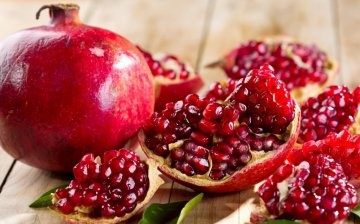
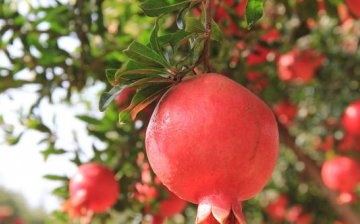
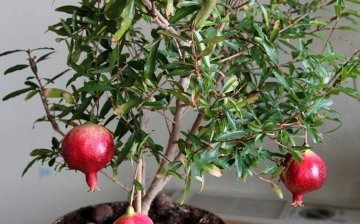
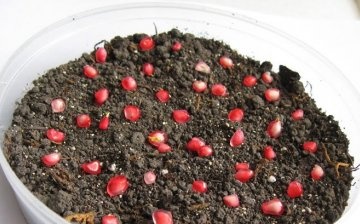


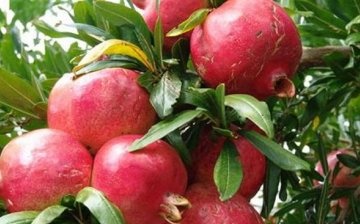
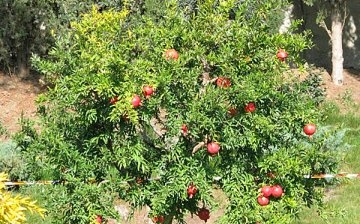
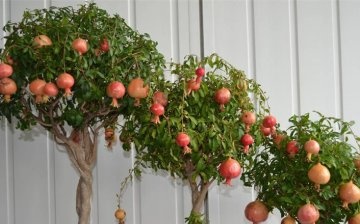
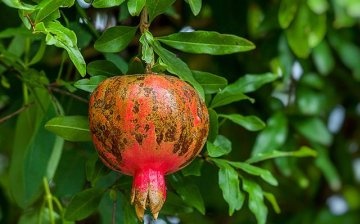










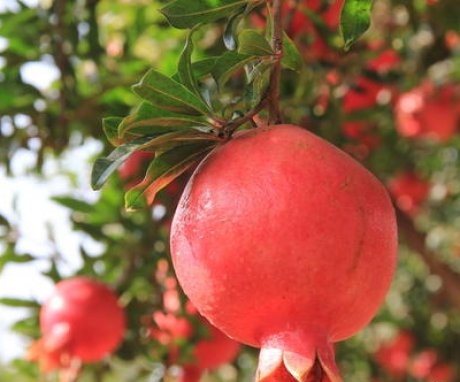
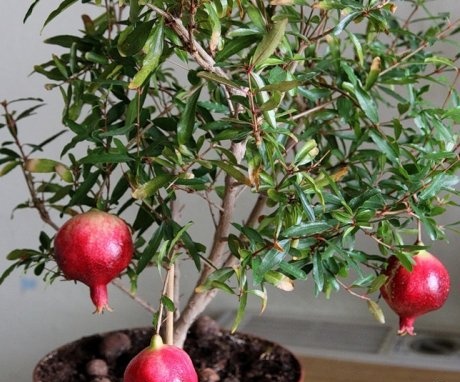
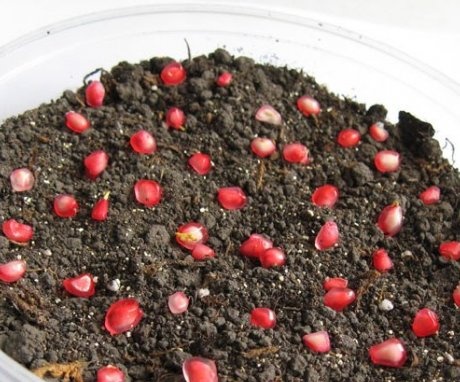
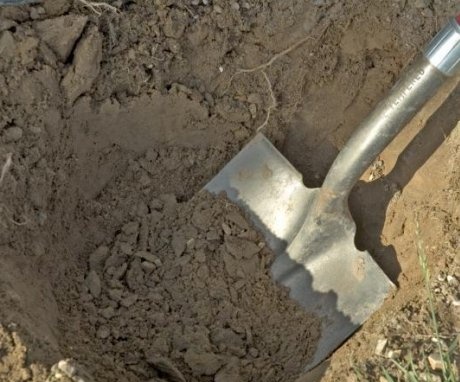
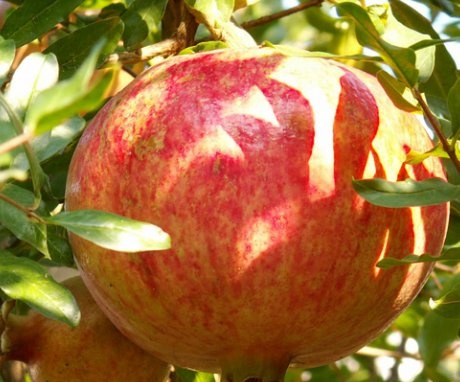
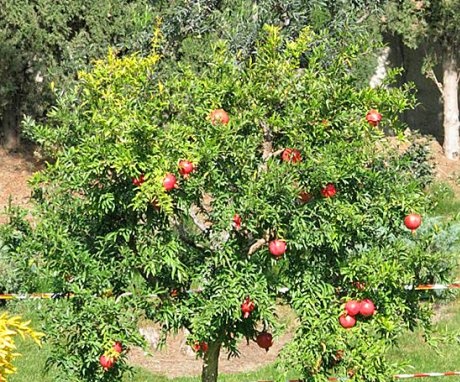
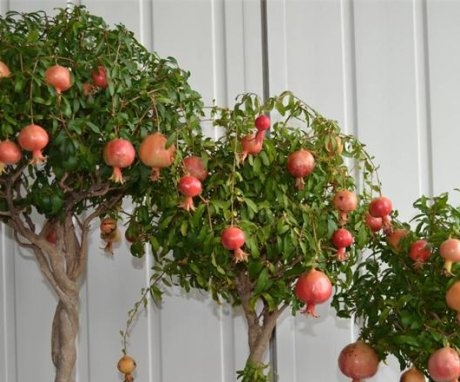
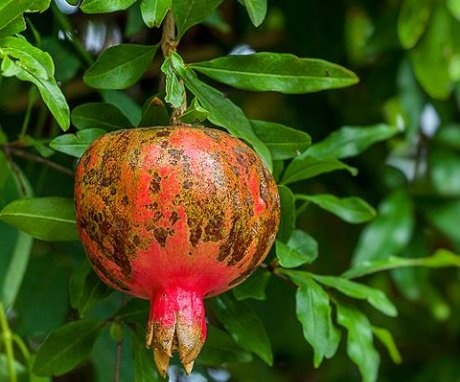
In our region, pomegranate can be grown only at home, and, in my opinion, it will be easier to do than when growing citrus fruits, because pomegranate tolerates dry air in a room well.
I tried to plant pomegranate from ripe fruit seeds. They sprout almost perfectly, on the street, however, then they do not survive the winter, in the apartment they also do not stand it for a long time, most likely there is not enough light.